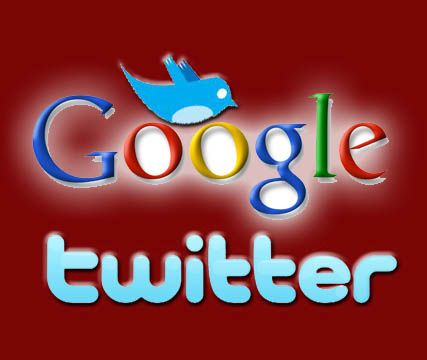 In a recent interview with Amit Singhal, Google smarty-pants, the veil over Google's methods for including Tweets in search results was slightly lifted. An article by Technology Review nicely reviewed what was said. Google began to include Twitter "tweets" in real-time search results about a month ago. Until recently the method in which they filtered these tweets was a mystery.
In a recent interview with Amit Singhal, Google smarty-pants, the veil over Google's methods for including Tweets in search results was slightly lifted. An article by Technology Review nicely reviewed what was said. Google began to include Twitter "tweets" in real-time search results about a month ago. Until recently the method in which they filtered these tweets was a mystery.
It is great to find out how these searches are taking place, but it is also a greater validation for the platform. Social media experts have praised the benefits of Twitter, but much of the lay population fails to recognize the value. By including Twitter content in search engine results Google helps the visibility of pertinent tweets. This in turn will help the SEO of the included links, and the SEO of intended targets overall.
Singhal also stated that some Twitter practices can be detrimental to real-time Google results. The hashtag (#) which is has been used ad nauseum in many tweets may decrease search results. The hashtag included next to a keyword will make that tweet appear when Twitterers click on the same word elsewhere on the site. For instance a tweet saying "The #dentist can improve your smile" will appear when someone clicks on #dentist elsewhere. The problem is many people go a bit overboard and use hashtags on three or more words, and it is a favorite tactic of spammers. While the hashtag may increase visibility on Twitter itself, the Google algorithm does not favor the hashtag and actually tries to filter it out. So if you want your tweet to show up in Google results, limit your use of the hashtag.
The other surprising factoid from the interview places importance on the "quality" of followers and followees. Singhal's interview did not disclose how the quality of users was determined. It has been deduced that the quality of a user is based on the number of followers, the quality of tweets, and the number of tweets. This reinforces the advice I have given to dentists. Don't worry about the sheer number of Twitter followers. Try to get followers who stay current, aren't marketers, and don't spam. Too many of these types of followers will diminish the quality of your Twitter experience and will also affect the searchability of the content you put out. I also advise dentists not to have followers all over the country if you are focused on getting patients in a certain area. The others will water down what should really be your focus. If you want to follow thousands of people, create another account.
Google is obviously making great efforts to include quality information from Twitter, while filtering out much of the fluff. So when you tweet make sure to include great keywords when appropriate. Don't over stuff your tweets with dental jargon just to show up in search results. Use these keywords much like natural speech. If the words don't fit, don't use them. When using links, try and use the full link if possible. Some links will be too long, so you may have to use a service like tinyurl.com. The longtail links will always be more beneficial than truncated ones.
Tweet away, dentists!!
Jason T. Lipscomb D.D.S. is a general dentist in Virginia. In addition to operating two busy dental practices, he educates other dentists how to market their practice with social media. Dr. Lipscomb and his partner Stephen Knight have released a social media handbook for dentists called "Social Media for Dentists". Social Media for Dentists is available now, and is a must have for any dentist who wants to learn social media practices. The book, Social Media for Dentists, can be ordered on his website.
Using Twitter to Obtain Maximum Impact for Your Dental Practice